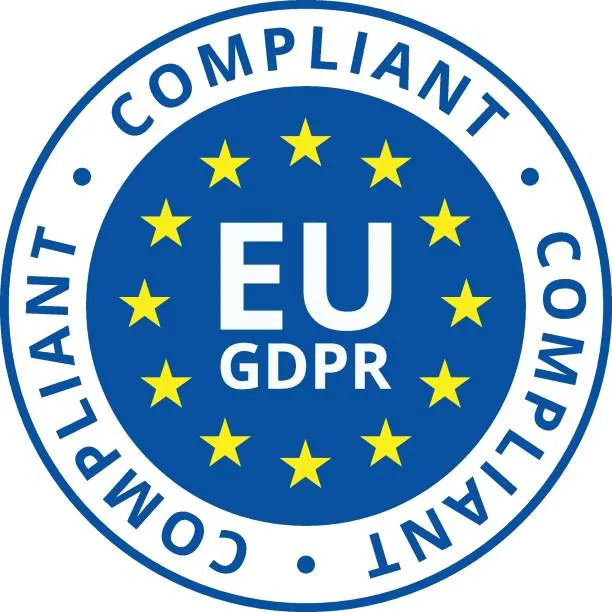In the evolving landscape of healthcare data protection, GDPR stands as a critical framework ensuring patient privacy and data security. This blog breaks down some of the nuances of data protection regulations into clear, actionable insights. We’ll explore exactly how medical facilities can safeguard patient data, respect privacy rights, and transform GDPR compliance from a challenge into a strategic advantage.
GDPR and Its Applicability to Healthcare
The GDPR is a comprehensive data protection law that came into effect on May 25, 2018. It aims to protect individuals’ privacy and personal data while harmonizing data protection laws across Europe. Healthcare organizations often process sensitive personal data, including health-related information, which falls under the category of “special categories of personal data” as defined by GDPR.
Key Principles of GDPR Compliance
Healthcare facilities must comply with the following core principles of GDPR:
- Lawfulness, Fairness, and Transparency: Data processing must be lawful and transparent to the individuals whose data is being processed.
- Purpose Limitation: Data should only be collected for specified, legitimate purposes and not further processed in a manner incompatible with those purposes.
- Data Minimization: Only the necessary amount of personal data should be collected and processed.
- Accuracy: Personal data must be accurate and kept up to date.
- Storage Limitation: Data should be retained only as long as necessary for the purposes for which it was processed.
- Integrity and Confidentiality: Personal data must be processed securely to protect against unauthorized access and breaches.
- Accountability: Data processing activities should be clearly documented and incident response procedures should be implemented to contain breaches.
For a more detailed explanation of these principles and an explanation of how to incorporate them into the software development process, check out our blog here.
Rights under GPDR Regulations
GDPR grants individuals specific rights regarding their personal data. Healthcare facilities must have clear procedures in place to address these rights:
- Right to be Informed: Organizations are required to provide individuals with clear information about how their personal data is being processed.
- Right to Access: Individuals can request access to their personal data held by the organization.
- Right to Rectification: Individuals can request corrections to inaccurate or incomplete personal data.
- Right to Erasure (Right to be Forgotten): Individuals can request deletion of their personal data under certain conditions.
- Right to Restrict Processing: Individuals can limit how their personal data is used if they contest the accuracy of their data.
- Right to Data Portability: Individuals can request their personal data in a structured format for transfer to another service provider.
- Right to Object: Individuals can object to certain types of processing of their data (e.g. marketing purposes)
- Rights related to Automated Decision Making and Profiling: Individuals have the right not to be subject to decisions based solely on automated processing, including profiling, which produces legal or similarly significant effects. They can request human intervention in automated decisions.

Source: GDPR Data Subject Rights
Facility Scale and GDPR Compliance Requirements
It’s important to note that this law applies to all healthcare facilities operating within the EU or processing data of EU residents, regardless of their size or specific type. However, the extent and complexity of compliance may vary based on the nature and scale of data processing.
| SCALE |
REQUIREMENTS |
|
Large Hospitals and Medical Centers |
|
|
Small Clinics and General Practitioner Offices |
|
|
Specialized Medical Facilities (e.g. Mental Health Clinics, Genetic Testing Centers) Research Institutes and Clinical Trial Centers |
|
Implement Robust Data Security Measures
To comply with GDPR, healthcare facilities must implement technical and organizational measures to ensure the security of personal data.
Recommended Technical Measures
- Encryption
- Access Controls
- Regular Security Audits
- Robust backup and disaster recovery systems
- Implementation of data protection by design and by default in all systems and processes
- Use of pseudonymization and anonymization techniques (where appropriate)
- Secure methods for data erasure
Recommended Organizational Requirements
- Appointment of a DPO
- Conduct regular DPIAs
- Maintaining detailed records of all data processing activities
- Establishing clear procedures for handling data subject rights requests
- Implementing a comprehensive data breach notification process
- Regular staff training on GDPR compliance and data protection
- Development and maintenance of privacy policies and notices
- Ensuring proper agreements are in place with data processors
GDPR regulations make heavy emphasis on the integration of data protection from the early stages of the design process of all systems and processes. Tools like SAMMY enables companies to formulate and implement a security assurance program aligned with the risks they are facing.
Roles and Responsibilities in GDPR Compliance
|
ROLES |
Data Protection Officers |
IT Security Officer |
|
DAY-TO-DAY |
|
|
|
MONTHLY |
|
|
|
QUARTERLY |
|
|
Conduct Regular Data Protection Impact Assessments (DPIAs)
Performing DPIAs is crucial for identifying risks associated with data processing activities. These assessments help organizations evaluate how personal data is handled and mitigate potential risks.
Steps to Conduct a DPIA
-
- Describe Information Flows: Map out how personal data is collected, stored, used, and shared within your organization.
- Assess Necessity and Proportionality: Evaluate whether the processing is necessary and proportionate to the intended purpose.
- Identify Risks: Analyze potential risks to individuals’ rights and freedoms.
- Evaluate Existing Measures: Assess technical, physical, and administrative safeguards in place. Review current privacy and security policies.
- Analyze Third-Party Processors: Review agreements with data processors to ensure GDPR compliance. Verify that these have appropriate safeguards in place.
- Document Findings: Prepare a detailed report of observations, vulnerabilities, and non-compliant areas identified during the assessment.
- Develop Action Plan: Develop measures to mitigate identified risks and enhance compliance with GDPR.
- Conduct a follow-up assessment: Verify that the compliance team has effectively implemented the corrective actions.
GDPR Compliance Through Employee Training
Training is essential in fostering a culture of data protection within healthcare facilities. All staff members should receive training tailored to their roles regarding GDPR compliance.
Key Training Topics
- Overview of GDPR principles and requirements
- Understanding individual rights under GDPR (e.g., right to access, right to erasure…)
- Best practices for handling personal health information securely (e.g. consent and lawful bases for processing, rules for transferring data outside the EU/EEA)
- Procedures for reporting data breaches
- Role-specific responsibilities
- GDPR Enforcement and Penalties
- Practice Scenarios and Case Studies

